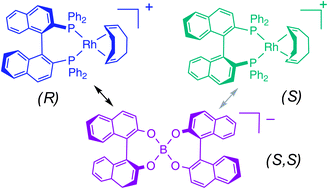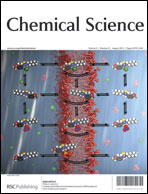Chiral ion-pairs are playing an increasingly important role in asymmetric catalysis. In order to understand the source of molecular recognition, a simple model system based on a BINAP-Rh(dialkene) cation and a BINOL borate anion was studied for both diastereomeric forms. It was discovered that one of these was energetically preferred and methods for quantifying the difference were devised using 31P NMR. The effect was general over a series of bis-binaphthyl borate anions, and required cycloocta-1,5-diene rather than bicyclohepta[2.2.1]diene as the dialkene component. The 1H NMR spectra of the cation in the parent ion pairs showed a range of anion-induced chemical shifts, their specificity implying selectivity in the ion-pair contact. X-ray structures of the two cyclooctadiene complexes were obtained and it proved possible to analyse the preferred contacts of individual ion-pairs. Rather than involving specific π–π, CH–π and CH–O intermolecular forces, the preference for one diastereomer in the COD case is based on dispersion forces that respond to the ability to pack the dialkene, and particularly its sp3 units, for maximum interaction with a concave naphthyl fragment. This interpretation is supported by analysis of one related NBD complex.

You have access to this article
 Please wait while we load your content...
Something went wrong. Try again?
Please wait while we load your content...
Something went wrong. Try again?


 Please wait while we load your content...
Please wait while we load your content...